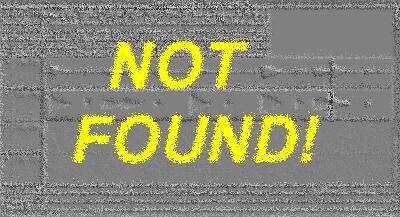
Emphasizing/De-Emphasizing Instruments in a Mix
The same technique of finding and cutting specific frequencies can also eliminate "fighting" between competing instruments. For example, while mixing a Spencer Brewer track for Narada records, there were two woodwind parts played on the same instrument, which created resonant peaks around the same frequency. When playing en ensemble they would load up that part of the frequency spectrum, which also made them difficult to differentiate. Here's a way to work around this:
- Find, then reduce, the peak on one of the instruments to create a more even sound.
- Note the amount of cut and bandwidth that was applied to reduce the peak.
- Using a second stage of EQ, apply a roughly equal and opposite boost at either a slightly higher or slightly lower frequency than the natural peak.
Both instruments will now sound very articulated, and because each peaks in a different part of the spectrum, they will tend not to "step on" each other.
This same principle applies to differentiating all instruments in a mix. The audio spectrum has only so much space, and you need to make sure that each sound occupies its own corner without ?ghting too much with other parts. For example, if a rhythm instrument interferes with a lead instrument, use EQ to reduce the rhythm instrument's response in the part of the spectrum that overlaps the lead.
One common mistake with tunes done by singer/songwriters is that they (naturally) feature themselves in the mix, and worry about "details" like the drums later. However, since drums cover so much of the audio spectrum (from the low-frequency thud of the kick to the high-frequency sheen of the cymbals), and since drums tend to be so upfront in today's mixes, it's usually best to mix the drums first, then find "holes" in which you can place the other instruments. For example, if the kick drum is very prominent, it may not leave enough room for the bass. So, boost the bass at around 800 to 1,000 Hz to bring up some of the pick noise and brightness. This is mostly out of the range of the kick drum, so the two won't interfere as much.
Try to think of the song as a spectrum, and decide where you want the various parts to sit, and their prominence (Fig. 6). I often use a spectrum analyzer when mixing, not because your ears don't work well enough for the task, but because it provides invaluable ear training and shows exactly which instruments take up which parts of the audio spectrum. This can often alert you to a buildup of level in a particular region.

If you really need a sound to "break through" a mix, try a little bit of boost in the 1
to 3 kHz region. Just don't do this with all the instruments; the idea is to use boosts
and cuts to differentiate one instrument from another.
To place a sound further back in the mix, sometimes engaging the highpass filter mode will
do the job by "dulling" the sound somewhat. Also, using the lowpass filter on instruments
that veer toward the bass range, like guitar and piano, can help trim their low end to
open up more space for the all-important bass and kick drum.
Musicians often summarize an instrument's character with various subjective terms. Fig. 7 correlates these terms to various parts of the frequency spectrum (this is, of course, a very subjective interpretation).

For example, to add warmth, apply a gentle boost (3 dB or so) somewhere in the 200-500 Hz range. However, as in the previous case, remember that if possible, cutting is preferable to boosting-for example, if you need more brightness and bottom, try cutting the midrange rather than boosting the high and low ends.
Another reason for waiting a bit is that instruments EQ'ed in isolation to sound great may not sound all that wonderful when combined. If every track is equalized to leap out at you, there's no room left for a track to "breathe." Also, you will probably want to alter EQ on some instruments so that they take on more supportive roles. For example, during vocals consider cutting the midrange a bit on supporting instruments (e.g., rhythm guitar) to open up more space in the audio spectrum for vocals. Although PARIS does not allow for automating EQ parameters, it's possible to do pseudo-automation by copying an object to two tracks. Set different EQs for the two tracks, then fade between them with the faders, mute buttons, or by cutting where appropriate and crossfading.
Finally, remember that EQ often works best when applied subtly. Even one or two dB of change can make a significant difference. However, inexperienced engineers often do something such as increase the bass too much, which makes the sound too muddy, so they increase the treble, and now the midrange sounds weak, so that gets turned up...you get the idea.
One of your best "reality checks" is an equalizer's bypass switch. Use it often to make sure you haven't lost control of the original sound. PARIS is particularly good in this respect, as you can bypass individual bands, or bypass all EQ sections at once in the master EQ section.
© 1999, Craig Anderton. All Rights Reserved. Used by permission.
By his 22nd birthday, Craig Anderton had recorded three albums with the Philadelphia-based
group "Mandrake Memorial," toured most of the USA, and played at Carnegie Hall. Craig is a
prolific author, having written the classic work Home Recording For Musicians,
several other books, and numerous articles for such magazines as EQ, Guitar Player, Keyboard, Musician, Performing Songwriter, Pro Audio Netherlands, and several others. He
is currently Technology Editor for EQ magazine, Consulting Editor for Guitar Player
magazine, and a monthly columnist for Keyboard.
© 2002 All Rights Reserved E-MU / ENSONIQ